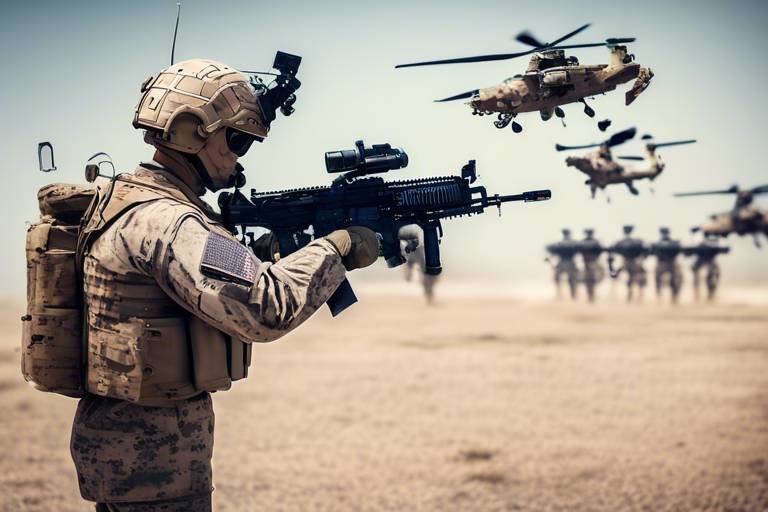Enhancing Firepower with AI-Powered Mortar Systems
In the ever-evolving landscape of military technology, artificial intelligence (AI) is emerging as a game-changer, particularly in the realm of artillery systems. The integration of AI into mortar systems is not just a trend; it is a significant leap forward that promises to redefine how combat operations are conducted. Imagine a battlefield where decisions are made in the blink of an eye, where data is analyzed and acted upon faster than a human can blink. This is the reality that AI-powered mortars are bringing to the forefront of modern warfare.
The primary goal of enhancing firepower with AI is to boost the accuracy and efficiency of mortar systems. Traditional artillery has its limitations, often relying on manual calculations and human intuition, which can lead to delays and errors. However, with AI, these systems can process vast amounts of data in real-time, enabling them to make informed decisions almost instantaneously. This doesn’t just mean hitting a target; it means hitting it with precision that minimizes collateral damage and maximizes mission success rates.
Consider a scenario where a mortar team is tasked with neutralizing an enemy position. In the past, they might have had to rely on outdated maps and manual calculations to determine the best angle and charge. With AI, the system can analyze current weather conditions, terrain features, and even enemy movements to provide optimal firing solutions. It’s like having a highly skilled advisor who can sift through mountains of information and provide actionable insights, ensuring that every shot counts.
Moreover, the adaptability of AI systems is a crucial factor in modern warfare. On a chaotic battlefield, conditions can change in seconds. AI-powered mortars can adjust their targeting parameters in real-time, responding to new threats or shifting enemy positions. This level of responsiveness is vital for maintaining tactical advantage and ensuring the safety of troops on the ground.
As we look towards the future, the potential for AI in mortar systems is not just limited to improved targeting and efficiency. The ongoing advancements in machine learning and predictive analytics are set to further enhance these capabilities. Imagine a future where AI can predict enemy movements or even suggest tactical maneuvers based on historical data and real-time analysis. The battlefield of tomorrow could very well be dominated by AI-driven strategies that outpace human capabilities.
In summary, the integration of AI into mortar systems represents a significant advancement in military technology. It enhances firepower by improving accuracy, increasing operational efficiency, and providing real-time adaptability on the battlefield. As we continue to explore the possibilities of AI in artillery, one thing is clear: the future of warfare is here, and it is powered by artificial intelligence.
- What are AI-powered mortar systems?
AI-powered mortar systems are artillery units that utilize artificial intelligence to enhance targeting accuracy, efficiency, and adaptability on the battlefield. - How does AI improve accuracy in mortar systems?
AI algorithms analyze real-time data, such as weather conditions and enemy movements, to provide precise targeting solutions, thereby minimizing collateral damage. - What challenges do AI-powered mortars face?
Challenges include technological limitations, the need for continued research and development, and ethical considerations surrounding autonomous decision-making in combat. - What is the future of AI in military applications?
The future looks promising, with advancements in machine learning and predictive analytics expected to further enhance the capabilities of AI in artillery and other military technologies.
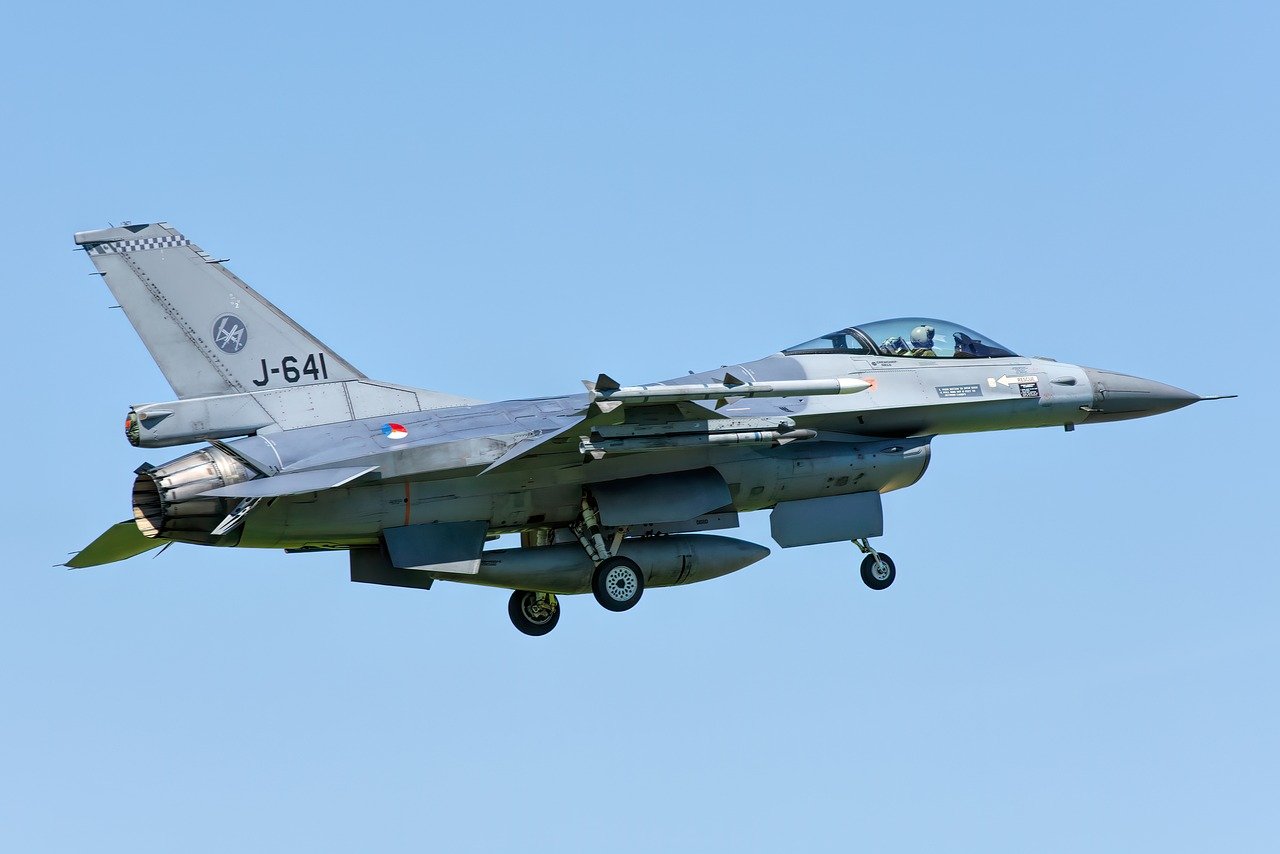
Introduction to AI in Artillery
Artificial intelligence (AI) is not just a buzzword; it's a game-changer in the world of military technology, particularly in the realm of artillery systems. Imagine a battlefield where decisions can be made at lightning speed, where artillery units can adapt to rapidly changing conditions without human intervention. This is the promise of AI integration in mortar systems. By harnessing the power of advanced algorithms and data analytics, military forces can significantly enhance their operational capabilities and effectiveness.
The integration of AI into mortar systems involves several key components. First, there’s the data collection phase, where vast amounts of information from various sources, such as reconnaissance drones, satellite imagery, and battlefield sensors, are gathered. This data is then processed using sophisticated AI algorithms that can analyze patterns and predict outcomes. The result? A mortar system that not only knows where to aim but can also adapt its strategy based on real-time battlefield dynamics.
Furthermore, the potential of AI in artillery goes beyond just targeting. It encompasses logistics, maintenance, and even training. For instance, AI can optimize supply chains, ensuring that munitions are delivered to the right place at the right time. It can also predict when equipment will require maintenance, thus reducing downtime and enhancing overall readiness. In training scenarios, AI can simulate various combat situations, helping soldiers hone their skills in a controlled environment.
As we delve deeper into the benefits of AI-powered mortars, it's essential to understand that this technology is not just about enhancing firepower; it's about revolutionizing warfare. The traditional methods of artillery operation, which often relied on manual calculations and human judgment, are being replaced by systems that can learn and adapt. This shift not only increases efficiency but also reduces the risk of human error, making operations safer for personnel on the ground.
In summary, the introduction of AI in artillery systems represents a significant leap forward in military technology. By leveraging data and advanced algorithms, AI-powered mortars are set to transform the battlefield landscape, providing military forces with enhanced precision, adaptability, and operational efficiency. As we explore the benefits of these systems further, it becomes clear that the future of warfare is not just about firepower; it's about intelligence.

Benefits of AI-Powered Mortars
The integration of artificial intelligence into mortar systems is not just a technological advancement; it represents a significant leap towards enhancing battlefield effectiveness. Imagine a scenario where artillery units can respond to threats with unprecedented speed and accuracy. AI-powered mortars are making this a reality, bringing a myriad of benefits that are transforming modern warfare.
One of the most compelling advantages of AI-powered mortars is their improved targeting accuracy. Traditional mortar systems often rely on manual calculations and estimates, which can lead to errors and unintended collateral damage. However, AI algorithms analyze vast amounts of data in real-time, enabling these systems to adjust their targeting based on a multitude of factors. For instance, they can consider environmental conditions, wind speed, and even the movement of enemy forces. This data-driven approach not only enhances precision but also significantly minimizes the risk of civilian casualties, a critical concern in modern combat scenarios.
Furthermore, the faster response times afforded by AI technology are nothing short of revolutionary. In the heat of battle, every second counts. AI-powered mortars can drastically reduce the time taken from target acquisition to firing, allowing military units to react swiftly to emerging threats. This is particularly crucial in dynamic combat environments where conditions can change rapidly. Consider a situation where enemy forces are advancing; an AI mortar system can quickly recalibrate its aim and fire, providing much-needed support to ground troops in real-time.
To illustrate the impact of these advancements, let's take a look at a simple comparison of traditional versus AI-powered mortar systems:
| Feature | Traditional Mortars | AI-Powered Mortars |
|---|---|---|
| Targeting Accuracy | Moderate | High |
| Response Time | Slow | Fast |
| Data Analysis | Manual | Real-Time AI Analysis |
| Collateral Damage Risk | Higher | Lower |
This table highlights how AI integration can drastically improve the operational capabilities of mortar systems. The ability to analyze data in real-time and adjust firing solutions not only enhances effectiveness but also increases the safety of civilians in conflict zones.
Another key benefit is the operational efficiency that AI brings to mortar operations. With the integration of machine learning and predictive analytics, these systems can streamline processes, allowing for quicker decision-making and execution. This means that military units can maintain a tactical advantage, ensuring that they are always one step ahead of their adversaries. In essence, AI-powered mortars are not just tools; they are strategic assets that can redefine the rules of engagement.
In summary, the benefits of AI-powered mortars extend far beyond mere technological upgrades. They represent a fundamental shift in how military operations are conducted, emphasizing accuracy, speed, and efficiency. As we continue to explore the potential of AI in artillery, it becomes clear that these systems are set to play a pivotal role in the future of warfare.
- What are AI-powered mortars?
AI-powered mortars are artillery systems enhanced with artificial intelligence to improve targeting accuracy, response times, and operational efficiency on the battlefield.
- How does AI improve targeting accuracy?
AI algorithms analyze real-time data from various sources, allowing for precise adjustments in targeting based on environmental factors and enemy movements.
- What challenges does AI face in military applications?
While AI offers significant advantages, challenges include technological limitations and ethical considerations regarding autonomous decision-making in combat.
- What is the future of AI in mortar systems?
The future looks promising, with ongoing advancements expected to further enhance the capabilities of AI-powered artillery in warfare.

Increased Accuracy
In the ever-evolving landscape of warfare, accuracy is paramount. The integration of artificial intelligence (AI) into mortar systems has brought about a revolutionary leap in targeting precision. Imagine a skilled marksman who can instantly adjust their aim based on real-time environmental data—this is what AI does for modern artillery. By harnessing complex algorithms, AI analyzes various factors such as wind speed, terrain, and even enemy movements to calculate the optimal firing solution. This capability not only enhances the effectiveness of strikes but also significantly reduces the risk of collateral damage, which is a critical concern in contemporary military operations.
To illustrate the impact of AI on accuracy, consider the traditional method of targeting a mortar. Soldiers often relied on manual calculations and static data, which could lead to errors and misjudgments, especially under the pressure of combat. Now, with AI-powered systems, data is processed in real-time, allowing for instantaneous adjustments. For example, if a mortar crew receives updated intelligence about enemy troop movements, the AI can quickly recalculate the necessary adjustments, ensuring that the mortar rounds hit their intended targets with pinpoint precision.
Moreover, AI employs advanced data analysis techniques, such as machine learning and predictive analytics, to refine targeting methods continually. These technologies enable the system to learn from past engagements, improving its accuracy over time. The more data the AI processes, the better it becomes at predicting the outcomes of various firing scenarios. This creates a feedback loop that not only enhances the current mission but also builds a wealth of knowledge for future operations.
In addition to improving accuracy, AI systems can also perform real-time adjustments. For instance, if a mortar is fired and the projectile is observed to be off-target due to unexpected wind gusts, the AI can quickly analyze the new conditions and recommend adjustments for subsequent rounds. This adaptability is crucial in dynamic battlefields where conditions can change rapidly.
To summarize, the integration of AI into mortar systems has revolutionized the way military forces approach targeting. The benefits include:
- Enhanced targeting precision through real-time data analysis.
- Reduction of collateral damage by minimizing errors in targeting.
- Continuous learning from past engagements to improve future accuracy.
- Real-time adjustments that allow for quick adaptations to changing conditions.
Q: How does AI improve the accuracy of mortar systems?
A: AI improves accuracy by analyzing real-time data such as wind speed, terrain, and enemy movements, allowing for precise targeting and adjustments.
Q: What are the risks of using AI in military applications?
A: While AI enhances operational efficiency, it raises ethical concerns regarding decision-making in combat and the potential for unintended consequences.
Q: Can AI systems learn from past engagements?
A: Yes, AI systems utilize machine learning to analyze previous data, which helps refine their targeting and improve accuracy over time.
Q: How quickly can AI adjust targeting in real-time?
A: AI can process new data and recommend adjustments almost instantaneously, allowing for rapid response to changing battlefield conditions.
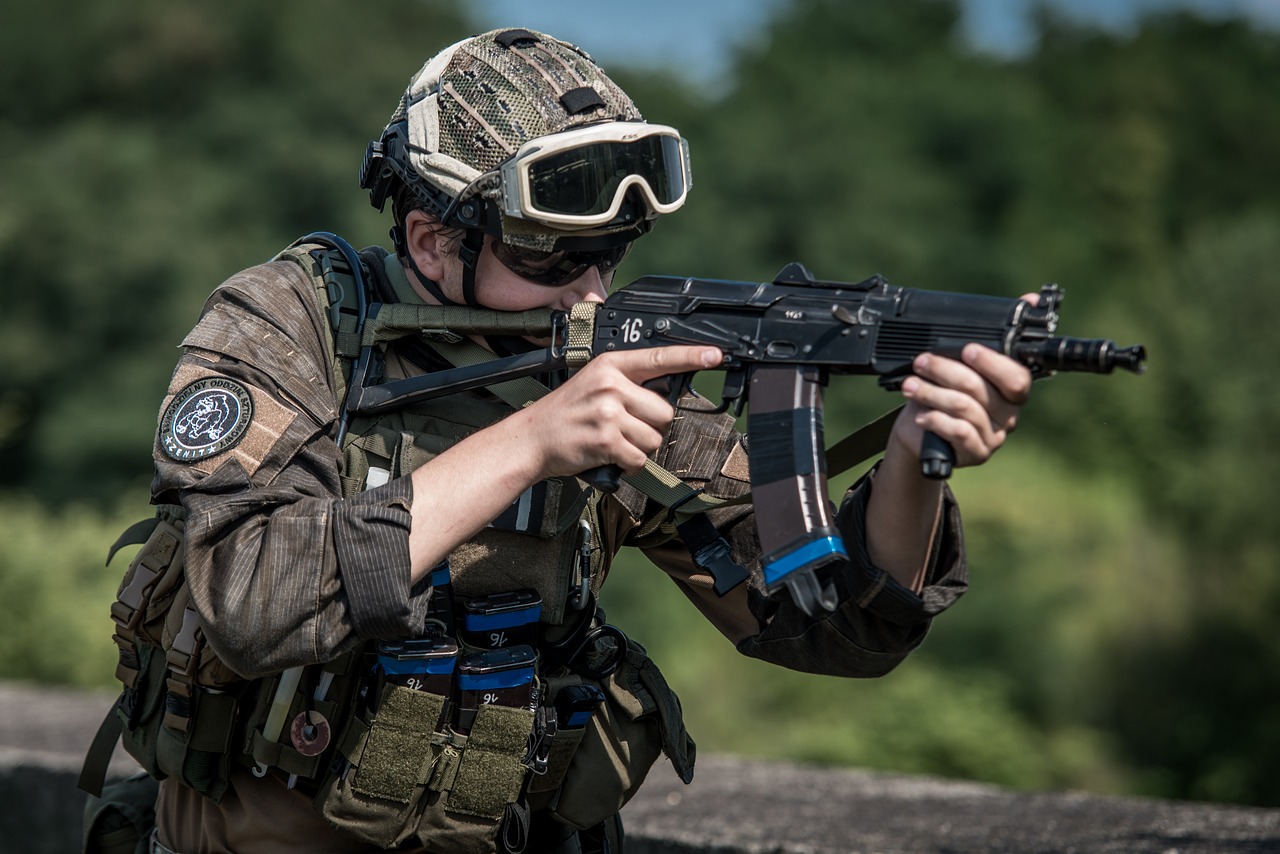
Data Analysis Techniques
In the realm of AI-powered mortar systems, play a pivotal role in enhancing targeting precision and operational effectiveness. At the heart of these techniques are advanced methodologies such as machine learning and predictive analytics. These tools allow military strategists to process vast amounts of battlefield data, transforming it into actionable insights. Imagine trying to solve a complex puzzle; machine learning algorithms sift through countless pieces of information, identifying patterns that would be impossible for a human to discern in real time.
Machine learning, for instance, involves training algorithms on historical data, enabling them to recognize trends and make predictions about future events. This is akin to teaching a child to recognize objects by showing them various examples until they can identify new ones on their own. By leveraging this technology, mortar systems can significantly enhance their targeting capabilities, ensuring that every shot counts.
On the other hand, predictive analytics takes this a step further by using statistical algorithms and machine learning techniques to identify the likelihood of future outcomes based on historical data. This means that mortar operators can anticipate enemy movements or changes in the battlefield landscape, allowing for preemptive strikes that can turn the tide of a conflict. For example, if data indicates a high probability of enemy troop movement in a particular area, the system can recommend a targeted mortar strike before the enemy even arrives.
Furthermore, real-time data processing is essential in dynamic combat environments. AI systems continuously analyze incoming data from various sensors, including drones, reconnaissance units, and satellite imagery. This constant flow of information allows for immediate adjustments to targeting parameters. If an enemy position shifts or if weather conditions change, the mortar system can recalibrate its aim almost instantaneously, ensuring accuracy and minimizing collateral damage.
To illustrate the effectiveness of these data analysis techniques, consider the following table that summarizes their key features and applications:
| Technique | Description | Application in Mortar Systems |
|---|---|---|
| Machine Learning | Algorithms that learn from historical data to identify patterns. | Improves targeting precision by recognizing enemy behavior. |
| Predictive Analytics | Uses statistical algorithms to forecast future events. | Anticipates enemy movements for preemptive strikes. |
| Real-Time Data Processing | Continuous analysis of incoming battlefield data. | Allows for immediate targeting adjustments in dynamic environments. |
In conclusion, the integration of these advanced data analysis techniques into mortar systems not only enhances their operational capabilities but also significantly improves the safety and effectiveness of military operations. As technology continues to evolve, we can expect even more sophisticated methods to emerge, further revolutionizing the battlefield landscape.
- What is the role of AI in mortar systems? AI enhances accuracy and efficiency in targeting, allowing for quicker and more precise strikes.
- How does machine learning improve mortar operations? Machine learning analyzes historical data to identify patterns and predict enemy movements, improving targeting decisions.
- What are the ethical implications of using AI in military applications? The use of AI raises questions about decision-making in combat and the potential for autonomous weapon systems to act without human oversight.
- Will AI replace human operators in mortar systems? While AI will augment human capabilities, the ethical and strategic oversight provided by human operators remains crucial.

Real-Time Adjustments
In the chaotic environment of the battlefield, conditions can shift in the blink of an eye. Imagine a scenario where a mortar team is ready to fire, but suddenly, the wind picks up, or enemy positions change. This is where the magic of powered by artificial intelligence comes into play. AI systems are designed to continuously analyze incoming data from various sources, such as weather reports, battlefield reconnaissance, and even feedback from other units. This capability ensures that mortar systems can adapt their targeting parameters almost instantaneously, maximizing effectiveness while minimizing risks.
The integration of AI allows for a level of responsiveness that traditional systems simply cannot match. For instance, if a mortar is initially aimed at a target that suddenly becomes obscured, the AI can quickly calculate a new target point based on the latest intelligence, ensuring that the mortar team remains effective even in rapidly changing scenarios. This adaptability not only enhances the precision of strikes but also significantly reduces the likelihood of collateral damage, a critical concern in modern warfare.
Moreover, AI systems utilize complex algorithms that can process vast amounts of data in real-time. These algorithms take into account various factors, such as:
- Current weather conditions
- Terrain analysis
- Movement of friendly and enemy forces
- Historical data on target behavior
By synthesizing this information, AI can make informed decisions about when to fire, how to adjust the angle of the mortar, and what munitions to use. This level of intelligence not only improves the accuracy of each shot but also enhances the overall tactical advantage of the unit on the ground.
In essence, the ability to make real-time adjustments transforms how mortar systems operate in the field. It is akin to having a seasoned strategist at the helm, constantly evaluating the battlefield and making split-second decisions that can turn the tide of combat. As these AI systems continue to evolve, we can expect them to become even more sophisticated, further enhancing the effectiveness of mortar operations in modern warfare.
- How does AI improve mortar accuracy? AI analyzes real-time data to adjust targeting parameters, ensuring precision strikes while minimizing collateral damage.
- What are the main challenges of implementing AI in mortar systems? Challenges include technological limitations and ethical considerations surrounding autonomous weaponry.
- Can AI systems adapt to sudden changes on the battlefield? Yes, AI systems are designed to process incoming data rapidly, allowing for real-time adjustments based on changing conditions.
- What role does data analysis play in AI-powered mortars? Data analysis helps refine targeting decisions by considering various factors like weather, terrain, and enemy movements.

Operational Efficiency
In the high-stakes world of modern warfare, can make or break a mission. The integration of artificial intelligence (AI) into mortar systems is revolutionizing how military forces operate, significantly reducing the time it takes from target acquisition to firing. Imagine a scenario where a soldier spots an enemy position and, within moments, the mortar team is ready to fire with pinpoint accuracy. This is no longer just a dream; it’s becoming a reality thanks to AI.
One of the key aspects of operational efficiency is speed. Traditional mortar systems often required extensive manual calculations and adjustments, which could lead to delays in response time. With AI, these processes are automated, allowing for near-instantaneous targeting and firing solutions. For example, AI algorithms can analyze battlefield data, such as terrain and weather conditions, in real-time, enabling mortar teams to react swiftly to dynamic combat situations.
Moreover, AI-powered systems are equipped with advanced data processing capabilities. They can handle vast amounts of information, filtering out noise and identifying critical data points that influence targeting decisions. This reduces the cognitive load on operators, allowing them to focus on strategic decisions rather than getting bogged down in calculations. The result? A more agile and responsive mortar team that can adapt to changing conditions on the battlefield.
To illustrate the impact of AI on operational efficiency, consider the following table that compares traditional mortar operations with AI-enhanced systems:
| Aspect | Traditional Mortar Systems | AI-Powered Mortar Systems |
|---|---|---|
| Target Acquisition Time | Minutes | Seconds |
| Data Processing | Manual calculations | Automated analysis |
| Response to Changes | Slow adjustments | Real-time modifications |
| Accuracy | Variable | High precision |
This table clearly demonstrates how AI enhances operational efficiency by streamlining processes and improving response times. But it doesn’t stop there. The integration of AI also allows for better resource allocation. With enhanced targeting capabilities, military leaders can make more informed decisions about where to deploy their assets, ensuring that every round fired counts. This not only conserves ammunition but also minimizes the risk of collateral damage, a critical concern in today’s combat environments.
Additionally, AI systems can learn from previous engagements. By analyzing past data, they can identify patterns and predict outcomes, further refining their operational strategies. This capability transforms the mortar system into a learning entity that continuously improves its performance, making it an invaluable asset on the battlefield.
In conclusion, the operational efficiency brought about by AI in mortar systems is a game-changer. It not only speeds up the entire process of target engagement but also enhances accuracy and reduces the cognitive burden on operators. With these advancements, military forces can operate more effectively, ensuring that they remain one step ahead in the ever-evolving landscape of warfare.
- What are AI-powered mortar systems? AI-powered mortar systems are artillery systems that utilize artificial intelligence to enhance targeting accuracy, speed, and operational efficiency.
- How does AI improve accuracy in mortar operations? AI algorithms analyze real-time data to refine targeting solutions, minimizing collateral damage and maximizing mission success rates.
- What challenges exist in implementing AI in mortar systems? Challenges include technological limitations, the need for continued research and development, and ethical considerations surrounding autonomous weapon systems.
- What is the future of AI in military applications? The future looks promising, with ongoing advancements expected to further enhance the capabilities of artillery systems and other military technologies.

Challenges of AI Implementation
While the integration of artificial intelligence (AI) into mortar systems offers a plethora of advantages, it is not without its challenges. These hurdles can be categorized into several key areas that need to be addressed to fully realize the potential of AI in military operations. One significant challenge is the technological limitations that currently exist. AI systems require vast amounts of data to function effectively, and the accuracy of these systems is highly dependent on the quality of the input data. In many combat scenarios, the availability of reliable data can be sporadic, leading to potential inaccuracies in targeting and decision-making.
Furthermore, AI algorithms are not infallible. They can sometimes make erroneous decisions based on flawed data or unexpected battlefield conditions. This brings us to the second challenge: ethical considerations. The use of AI in military applications raises profound moral questions. For instance, should a machine be entrusted with making life-and-death decisions in combat? The prospect of autonomous weapons systems operating without human oversight is troubling for many. There is a fear that such systems could malfunction or be hacked, leading to unintended consequences on the battlefield.
Moreover, the implementation of AI in mortar systems requires substantial investment in both technology and training. Military personnel must be adequately trained to operate these advanced systems, which can be a time-consuming and costly process. This leads to logistical challenges, as the military must balance the need for cutting-edge technology with the practicalities of training and maintaining personnel readiness. The transition to AI-powered systems also necessitates changes in existing operational protocols, which can be met with resistance from those accustomed to traditional methods.
In addition to these challenges, there are also concerns regarding interoperability. As different military branches and allied nations develop their own AI systems, ensuring that these systems can communicate and work together seamlessly becomes a complex task. The lack of standardization can hinder collaborative efforts and reduce the overall effectiveness of joint operations.
To summarize, while the benefits of AI in mortar systems are significant, the challenges associated with its implementation cannot be overlooked. Addressing these issues will require ongoing research, development, and dialogue among military leaders, technologists, and ethicists to create a framework that maximizes the advantages of AI while minimizing potential risks.
- What are the main challenges of implementing AI in mortar systems?
The main challenges include technological limitations, ethical considerations, the need for extensive training, and issues related to interoperability. - How does AI improve accuracy in mortar systems?
AI enhances accuracy by analyzing real-time data and making adjustments to targeting based on current battlefield conditions. - What ethical concerns are associated with AI in military applications?
Ethical concerns revolve around the delegation of life-and-death decisions to machines, potential malfunctions, and the implications of autonomous weapon systems. - Are there any logistical challenges in training personnel for AI systems?
Yes, training personnel to operate advanced AI systems can be time-consuming and costly, requiring significant investment and changes in operational protocols.
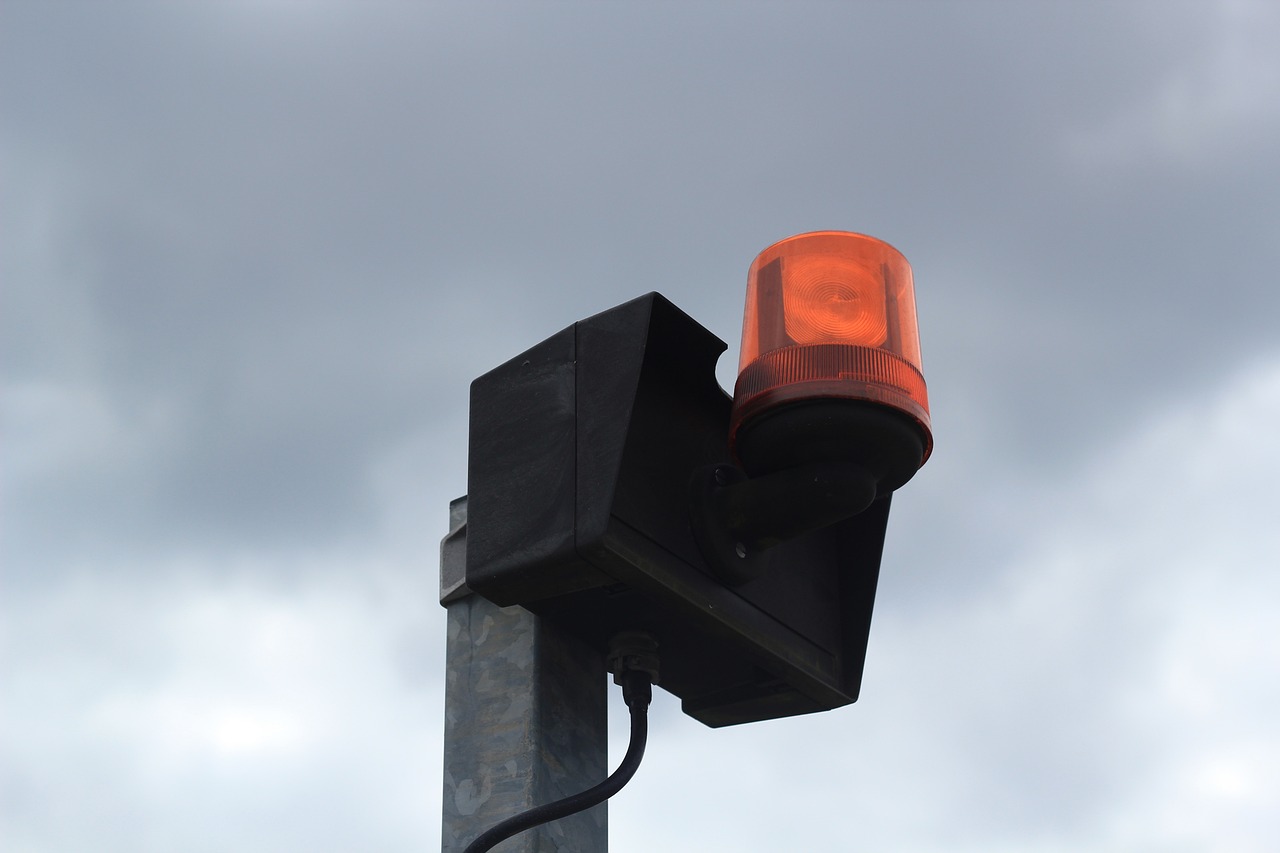
Technological Limitations
As we venture deeper into the realm of AI-powered mortar systems, it's essential to recognize that while the potential benefits are vast, there are also significant that we must confront. The integration of artificial intelligence into military artillery is not as straightforward as it may seem. One of the primary hurdles is the complexity of data processing. AI systems rely on vast amounts of data to make informed decisions, but acquiring, processing, and analyzing this data in real-time can be a monumental task. Imagine trying to find a needle in a haystack, but the haystack is constantly shifting and expanding; that's what data analysts face on the battlefield.
Moreover, the reliability of AI algorithms is another concern. These algorithms need to be trained on diverse datasets to ensure they can handle various combat scenarios. If the training data is incomplete or biased, the AI might make erroneous decisions, potentially leading to catastrophic outcomes. This unpredictability raises questions about the readiness of these systems for actual deployment. It's akin to giving a young driver the keys to a race car; without proper training and experience, the results can be disastrous.
Furthermore, the integration of AI with existing systems poses technical challenges. Many military units still rely on legacy systems that may not be compatible with modern AI technologies. This lack of interoperability can hinder the seamless operation of AI-powered mortars and create gaps in communication between different units on the battlefield. In some cases, upgrading these systems may require significant financial investment and time, which can delay the implementation of AI solutions.
Lastly, there's the issue of cybersecurity. As AI systems become more integrated into military operations, they also become more vulnerable to cyber threats. Hackers could potentially exploit weaknesses in AI algorithms, leading to compromised systems that could be manipulated or disabled. This vulnerability not only threatens the effectiveness of mortar systems but also poses a broader risk to national security. It’s like leaving the backdoor open to your house; you might be safe inside, but there’s always a chance someone can sneak in.
In summary, while the promise of AI in mortar systems is exciting, we must tread carefully. Addressing these technological limitations requires ongoing research and collaboration among military engineers, data scientists, and ethical experts to ensure that we can harness the full potential of AI while mitigating its risks.
- What are the main technological limitations of AI in mortar systems?
The main limitations include data processing complexity, reliability of algorithms, integration with existing systems, and cybersecurity vulnerabilities.
- How does data bias affect AI decision-making?
Data bias can lead to erroneous decisions by AI systems, which may not perform effectively in diverse combat scenarios if the training data is incomplete or skewed.
- What steps are being taken to improve the reliability of AI algorithms?
Research and development efforts are focusing on creating more robust algorithms that can adapt to various conditions and reduce the risk of errors in decision-making.
- Why is cybersecurity a concern for AI-powered military systems?
As AI systems become more integrated into military operations, they become potential targets for cyberattacks, which could compromise their effectiveness and national security.

Ethical Considerations
The advent of AI in military applications, particularly in mortar systems, brings forth a myriad of that cannot be ignored. As we stand on the brink of a new era in warfare, the integration of autonomous systems raises significant questions about the moral implications of allowing machines to make life-and-death decisions. Imagine a battlefield where algorithms, rather than human judgment, dictate the course of action; this scenario is both fascinating and frightening.
One of the primary concerns revolves around the autonomy of weapon systems. When AI systems are granted the ability to select and engage targets without human intervention, the risk of unintended consequences escalates dramatically. Who is held accountable if an autonomous mortar system misidentifies a target and causes civilian casualties? This dilemma challenges traditional notions of responsibility and accountability in warfare.
Moreover, the potential for bias in AI algorithms is another ethical hurdle. AI systems learn from historical data, which may include biases present in previous military engagements. If these biases are not addressed, there is a risk that AI could perpetuate or even exacerbate existing inequalities and injustices on the battlefield. This could lead to disproportionate damage to certain groups or areas, raising questions about fairness and equity in military operations.
Another layer of complexity is introduced by the psychological impact on soldiers and commanders. The reliance on AI for critical decision-making may lead to a detachment from the moral weight of warfare. When a soldier knows that an algorithm is making the call to fire, it can create a dissonance that strips away the human element of combat. This disconnection can have profound effects on military culture and the mental health of personnel involved.
Additionally, the risk of escalation in conflicts due to AI-driven systems cannot be overlooked. The speed at which AI can process information and make decisions may lead to rapid responses that could spiral out of control. In a tense situation, an AI system might interpret a minor skirmish as a significant threat, prompting an aggressive response that could escalate into full-scale conflict. This raises questions about the need for human oversight and the importance of maintaining a human-in-the-loop approach in critical military operations.
To address these ethical concerns, military organizations must establish comprehensive frameworks that govern the use of AI in warfare. This includes creating strict guidelines for the development and deployment of AI systems, ensuring transparency in algorithms, and implementing robust oversight mechanisms. Furthermore, ongoing dialogue among ethicists, military leaders, and technologists is essential to navigate the moral landscape of AI in combat.
In conclusion, while AI-powered mortar systems hold the potential to revolutionize military operations, the ethical implications of their use are profound and complex. As we venture further into this uncharted territory, it is crucial to balance technological advancements with ethical considerations to ensure that we do not lose sight of our humanity in the pursuit of enhanced firepower.
- What are the main ethical concerns regarding AI in military applications? The primary concerns include accountability for decisions made by AI, potential biases in algorithms, psychological impacts on military personnel, and the risk of conflict escalation.
- How can military organizations address these ethical concerns? By establishing guidelines for AI development, ensuring algorithm transparency, and promoting ongoing discussions among ethicists and military leaders.
- Is it possible to maintain human oversight in AI-driven military systems? Yes, maintaining a human-in-the-loop approach is crucial to ensure that ethical considerations are upheld in critical decision-making processes.
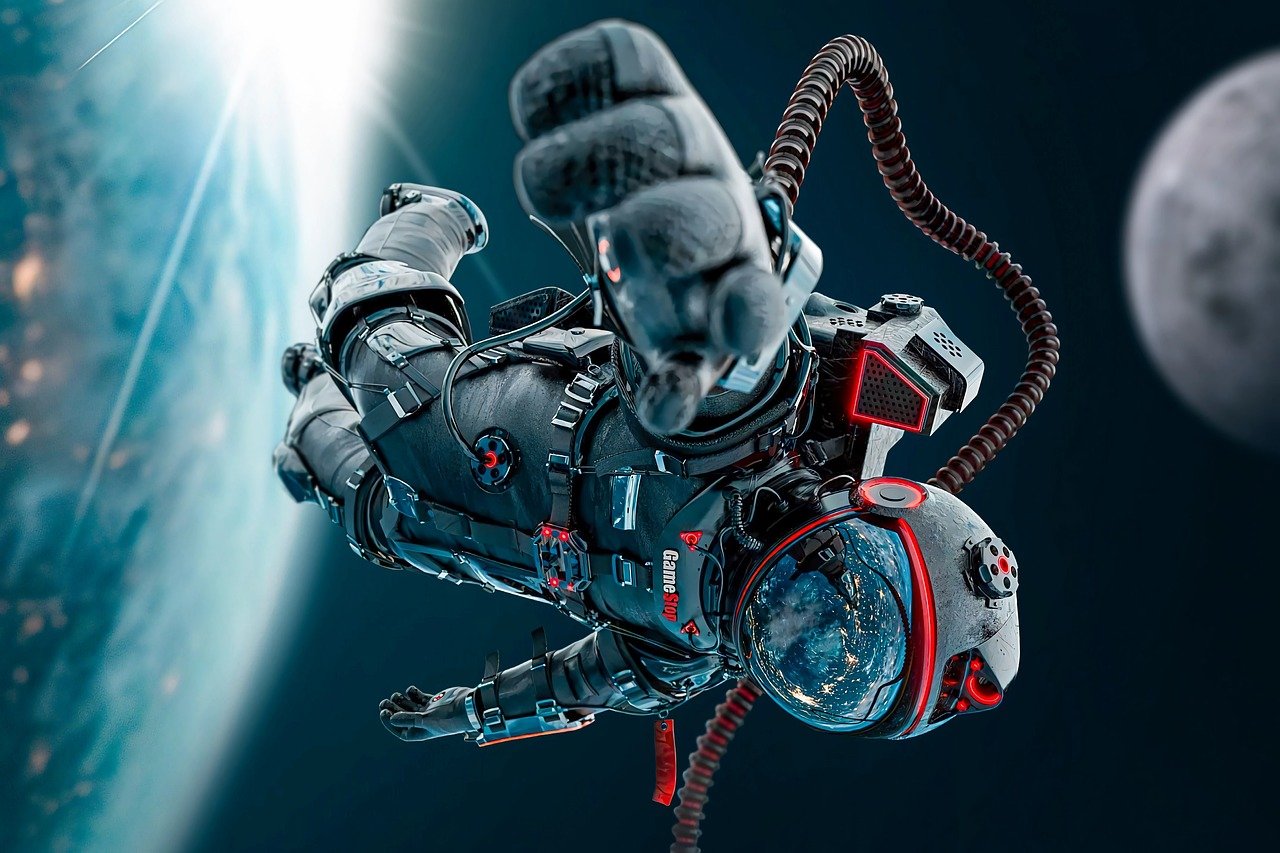
The Future of AI in Mortar Systems
The horizon of military technology is evolving at an astonishing pace, and AI-powered mortar systems are at the forefront of this transformation. As we look to the future, the potential advancements in these systems are not just exciting; they are revolutionary. Imagine a battlefield where mortar systems can autonomously adapt to new threats, analyze vast amounts of data in seconds, and execute precision strikes with minimal human intervention. This is not just a fantasy; it is becoming a reality.
One of the most promising aspects of AI in mortar systems is the concept of predictive warfare. By utilizing advanced algorithms, future mortar systems will be able to anticipate enemy movements and adjust their targeting in real-time. For instance, if an enemy unit is detected moving towards a strategic location, AI can calculate the optimal firing solution before the enemy even reaches its destination. This proactive approach could significantly enhance battlefield effectiveness and operational success.
Furthermore, the integration of machine learning will enable these systems to continuously improve their performance. Each engagement provides valuable data that can be analyzed to refine targeting algorithms. Over time, this creates a self-learning system that becomes increasingly proficient at distinguishing between legitimate targets and non-combatants, thereby reducing collateral damage. In a world where the stakes are high, such advancements could be game-changers.
However, the future isn't just about technology; it's also about collaboration. The next generation of mortar systems will likely operate in tandem with other military assets, such as drones and reconnaissance units. This interconnectedness will create a comprehensive battlefield awareness, allowing for coordinated strikes that are both precise and effective. Picture a scenario where a drone identifies a target and transmits the information to an AI-powered mortar, which then calculates the best firing angle and timing for the strike. This level of synergy could redefine how modern warfare is conducted.
As we explore these advancements, we must also consider the implications of autonomous decision-making. The ability of AI systems to make split-second decisions raises important ethical questions. Who is responsible if an autonomous mortar system mistakenly targets a civilian area? Addressing these concerns will be crucial as we move forward, ensuring that technological advancements do not outpace our ethical frameworks.
In conclusion, the future of AI in mortar systems is bright and filled with potential. As technology continues to evolve, we can expect to see enhanced accuracy, improved operational efficiency, and a shift towards more proactive military strategies. However, with great power comes great responsibility, and it is imperative that we navigate the ethical landscape carefully as we embrace these innovations.
- What are AI-powered mortar systems?
AI-powered mortar systems are artillery systems that utilize artificial intelligence to enhance targeting accuracy, operational efficiency, and decision-making processes on the battlefield.
- How does AI improve the accuracy of mortar systems?
AI algorithms analyze real-time data to refine targeting solutions, minimizing collateral damage and increasing the likelihood of mission success.
- What are the ethical concerns surrounding AI in military applications?
The use of AI in warfare raises questions about accountability, decision-making in combat, and the potential for autonomous systems to make life-and-death choices without human oversight.
- What advancements can we expect in the future?
Future advancements may include predictive warfare capabilities, enhanced machine learning for self-improvement, and better collaboration between AI systems and human operators.
Frequently Asked Questions
- What are AI-powered mortar systems?
AI-powered mortar systems are advanced artillery units that utilize artificial intelligence to enhance their targeting accuracy, operational efficiency, and overall effectiveness on the battlefield. By analyzing data in real-time, these systems can make immediate adjustments to improve mission outcomes.
- How does AI improve accuracy in mortar systems?
AI enhances accuracy by employing sophisticated algorithms that analyze vast amounts of battlefield data. This allows for precise targeting, which minimizes collateral damage and increases the likelihood of mission success. The system can adapt to changing conditions, ensuring that each shot counts.
- What are the operational benefits of using AI in mortars?
Integrating AI into mortar systems streamlines operations by significantly reducing the time from target acquisition to firing. This efficiency can be pivotal in fast-paced combat scenarios, giving military units a tactical advantage by allowing them to respond swiftly to threats.
- Are there any challenges associated with AI implementation in mortar systems?
Yes, while AI offers many benefits, its implementation comes with challenges such as technological limitations and ethical concerns. Ongoing research is necessary to overcome these hurdles and ensure that AI systems are reliable and ethically sound in military applications.
- What ethical considerations arise from using AI in military operations?
The use of AI in military operations raises significant ethical questions, particularly regarding decision-making in combat. Concerns include the potential for autonomous weapon systems to make life-and-death decisions without human intervention, leading to debates about accountability and moral responsibility.
- What does the future hold for AI-powered mortar systems?
The future of AI in mortar systems looks promising, with advancements expected in technology and capabilities. As research progresses, we can anticipate improvements in targeting precision, operational efficiency, and the development of more sophisticated AI algorithms that enhance battlefield effectiveness.






